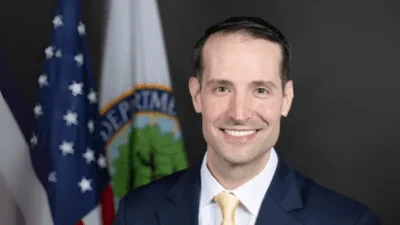WASHINGTON, D.C. - Before a record audience, the House Nuclear Cleanup Caucus hosted a discussion last week of the “secret cities" of the Manhattan Project that today are the focus of EM cleanup efforts.
Oak Ridge, Tennessee, Los Alamos, New Mexico, and the Hanford Site in Richland, Washington, were conceived, built and operated in secrecy as they supported weapons development during World War II. A new exhibit at the National Building Museum in Washington, D.C. tells the story, and the exhibit curator, Martin Moeller, did the same at the caucus event.
“There was a great deal of innovation that went into the conception of these communities," said Moeller. “These were happening at an unprecedented scale and speed. It is a bit of an exaggeration to say they were built overnight, but practically. And they were kept secret for two and a half years, which is now just unfathomable.
“I think the ultimate story to me was that, here in a time of undoubted national emergency, really people felt they were fighting for the survival of western civilization. The people who were in charge of the Manhattan Project felt it was critical to create communities that were comfortable and welcoming and pleasant for the people who were going to be working there.
“I do think it was interesting how many people who grew up in Oak Ridge and Los Alamos and Hanford-Richland talk about how pleasant places they were to grow up even during the war when they were fenced-in secure communities."
Moeller was joined by the EM field managers of the three sites, where DOE is cleaning up the waste generated by weapons production during the world war and the subsequent Cold War. The officials said they are mindful of the communities and their legacies.
At Hanford, Doug Shoop, manager of the Richland Operations Office, noted the preservation of the historic B Reactor, the world’s first full-scale plutonium production reactor and the centerpiece of the Hanford branch of the Manhattan Project National Historical Park that has features at the three sites.
“I remember about 15 to 20 years ago we were at a critical juncture with the Environmental Protection Agency and the Department of Ecology at the Hanford Site, and was it to tear down B Reactor or leave the B Reactor so people could enjoy that and learn the story that fundamentally changed our world?" Shoop asked. “So with a lot of support and lot of support from our congressional folks, we were able to save the B Reactor," he said.
Doug Hintze, manager of the EM Los Alamos Field Office, said cleanup will free land for community use, a key aim.
“One of the things we make sure we emphasize is that we are part of the community," he said. “A lot of times folks will say, ‘Wait a minute, you don’t necessarily care about what you’re doing,’ and the answer is no, we do. We have families in there. We drink the water. We communicate with all the folks there. We are the community."
Jay Mullis, manager of the Oak Ridge Office of Environmental Management, said historic preservation is among the missions at the Oak Ridge Site, which also hosts a branch of the park.
“What went on out there is very important to us," Mullis said. “Certainly around Oak Ridge, you have a lot of folks that were still part of the community, and so it is important to us to commemorate that. We are working with our partners in the (DOE Office of) Legacy Management and with our other program offices there to be part of the larger Manhattan Project (park) that will be there."
The caucus is composed of U.S. House members who represent cleanup communities and other lawmakers interested in the cleanup mission. Its chairman Rep. Chuck Fleischmann of Tennessee announced the audience for the “secret cities" program was a record for a caucus event.
“It’s tremendous we can come together and work together to clean up legacy wastes," Fleischmann said. The cleanup mission “is something we can point to and say the federal government is investing in something that is its obligation to fix and cure, and actually having tremendous results."
Source: U.S. Dept. of Energy, Office of Environmental Management









